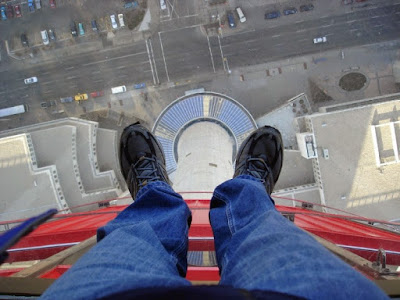What is altitude sickness?
At high altitudes, there is less oxygen in the air. This allows you to get all kinds of complaints. This is called altitude sickness.
The body has to replenish shortage of oxygen by a deeper breathing, increased heart rate, and by making to produce more red blood cells. If that adjustment does not work well, you will be sick.
The severity of the disease depends on the rate of ascent and the final height at which you come. People who suffer normally live at sea level altitude sickness rather than those who already live in the mountains.
Usually at altitude sickness is mild symptoms such as headache, light-headedness, worse sleep and anxiety. Later, other problems arise, such as nausea, vomiting and dizziness.
Most people with mild altitude sickness after two days better. You can take some paracetamol for headaches. It is also important that you take it easy and drink plenty of water. You may only rise to greater heights as all complaints are about.
In severe form of altitude illness occur fluid retention in brains and / or lungs (brain and / or pulmonary edema). Ultimately, brain edema ensure that someone in a coma. This may happen within a few hours after the onset of the first symptoms.
Someone with a severe form of altitude sickness should immediately descend to get a lower area and supplemental oxygen. Also, drugs are often needed.
What are the symptoms of altitude sickness?
In a mild form of altitude sickness, you can get a headache or light-headedness and breathlessness. Even a little walk you can get out of breath at high altitudes. Furthermore, many people also sleep some more restless at high altitude. They wake up more often than usual.
Later, other problems arise, such as nausea, vomiting, a feeling of weakness and dizziness. Another phenomenon is the altitude edema. You will then puffiness in hands, feet and face. Usually these edema after a few days have gone.
The mild form usually goes after a few days again.
In severe form of altitude illness occur cerebral and / or pulmonary edema. Mild pulmonary edema can be recognized by a dry cough and shortness of breath. The situation is more dangerous to confusion, coughing up bloody sputum, mild fever and a blue-purple discoloration of lips, skin and nails. In very severe pulmonary edema is common to hear a gurgling sound when breathing. Even someone gasping for breath.
Brain edema often begins with splitting headache that will not go with the use of painkillers. Someone with cerebral edema is usually very confused, says or does strange things and strange walks (uncoordinated). Ultimately, brain edema ensure that someone in a coma. This may happen within a few hours after the onset of the first symptoms.
Treatment for altitude sickness
Most people with altitude sickness after two days better. You can take some paracetamol for headaches. It is also important that you take it easy and drink plenty of water. You may only rise to greater heights as all complaints are about.
In severe form of altitude sickness, you should immediately descend to a lower area. Sometimes, a few hundred meters is enough to reduce the symptoms. To avoid life-threatening situations, you also get oxygen from an oxygen bottle.
Against pulmonary edema is generally used nifedipine. This drug lowers blood pressure in the pulmonary arteries. For brain edema helps dexamethasone, a drug from the group of adrenal hormones (corticosteroids).

